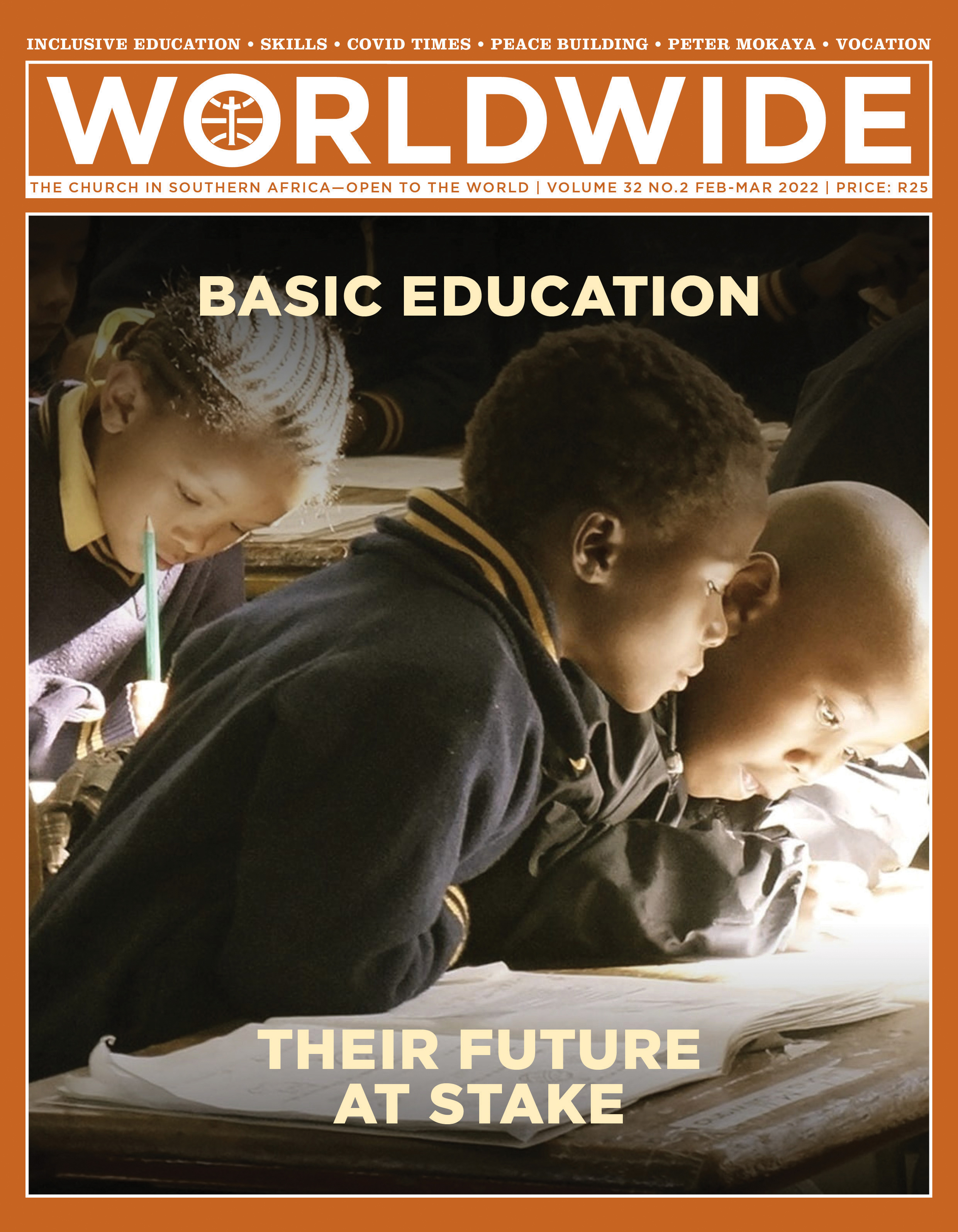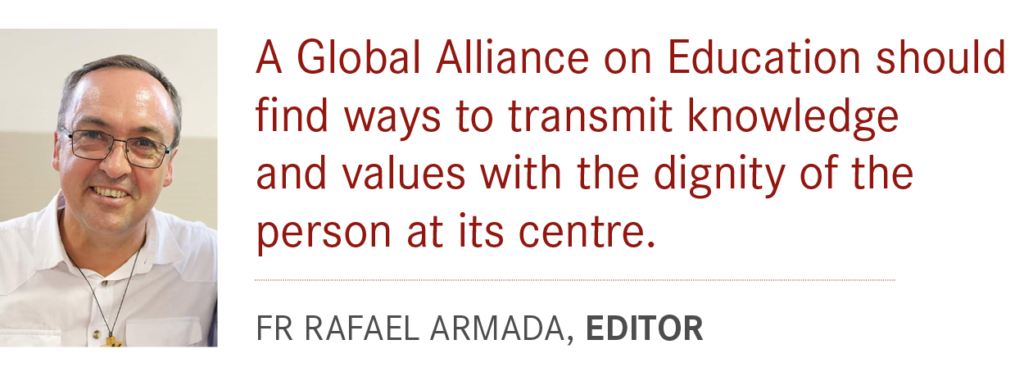
Basic Education Their Future At Stake
The front cover picture was certainly not taken during Covid times. We do not know its exact location, but it could be from any particular school in rural South Africa. What indeed the image of these children reflects is their eagerness for learning and doing it together. Their minds are surely full of dreams; their desires for a bright future cannot be frustrated. The task of offering them an inclusive and integral quality education can look gigantic, but each one’s contribution can make the miracle happen.
Radar

No Future Without Quality Education
BY Rafael Armada | Editor
SCHOOLS RE-OPENED in South Africa a few weeks ago. We saw long queues of parents at their gates, anxiously struggling to secure a place for their children. Looking at the scene with concern, we may ask ourselves: what went wrong? However, the other side of the reality is that, in the last decades, the rate of enrolment in South Africa has increased considerably, with more than 90% attendance of children of school-going age. Something to be grateful for and to be celebrated.
COVID-19 has created a global disruption and it is estimated that 10 million children in the world will not come back to school. In South Africa, it has also exposed the flaws of the educational system and the effects of inequality. Students in affluent and mainly urban schools have been able to continue their on-line education; in rural areas and townships, where disrupted learning in the classroom has not been replaced, children have lost more than a year of tuition.
The SA government invests large amounts in education annually (19.5% of its budget and 6% of its GDP, in line with other Organisation for Economic Co-operation and Development-OECD countries), but the results are rather disappointing. Corruption and negligence contribute to it. South African’s learners occupy the last positions in international reading and comprehension exams and in mathematics and physics. The knowledge gaps in the foundational phase cause high dropout rates and hinders learners to advance to upper levels of education. Only 7% of the students reach university, while in other equivalent countries the figure reaches 29%.
Why is this happening? Montfort Mlachila and Tlhalefang Moeletsi, in their 2019 study, Struggling to make the grade: a review of the causes and consequences of the weak outcomes of South Africa’s education system, identified some causes of inefficiency in the educational system, especially in rural and township schools. First of all, they see a low level of qualification among many teachers; a flat salary system which does not consider performance outcomes, demotivates them to improve their curricula. Accountability of their commitment is often fairly poor (i.e. high levels of absenteeism) and in many circumstances are over-protected by their trade unions.
Schools in rural areas and townships lack decent infrastructures. Poor maintenance, service delivery protests that are often accompanied by the destruction of the school buildings, and natural disasters, such as the recent storms in Kwa-Zulu Natal and Eastern Cape Provinces, add further challenges. Therefore, schools are overcrowded. Moreover, the higher the number of students, the greater funding the school receives; so, principals tend to promote their schools to get more funds—often not used to build more classrooms—causing stress among teachers, burdened with an excessive number of learners in their classrooms. Violence, drugs, bullying are also common in schools and add even more challenges to teachers. These are obstacles that are added to family situations of poverty, abuse, and lack of food and transport.
The need to reverse this dire situation is more than urgent. Without quality education, we cannot aspire to have jobs and a decent future for the next generations. The gap of inequality will widen even more. In 2020, Pope Francis called for a Global Alliance inviting all sectors of society (government, families, teachers, communities, religious bodies, among others) to unite forces in creating a new model of education. “It takes a village to educate a child and we need to create that village”, said the Pope quoting an African proverb. This Global Alliance on Education should find ways to transmit knowledge and values with the dignity of the person at its centre. The Pope speaks of education in justice, solidarity, goodness and beauty that counteract the throw-away and individualistic culture of indifference—but also, to form well-equipped professionals that can render a good service to the society. The example of the Kenyan Franciscan Brother Peter Mokaya Tabichi, narrated in the inside pages, is indeed inspirational. Time is running out. There is no future without quality education.
| Dates To Remember |
|
February 1 – Blessed Benedict Daswa 2 – World Day of Prayer for Consecrated Life 4 – International Day of Human Fraternity 6 – International Day of Zero Tolerance of Female Genital Mutilation 8 – International Day of Prayer and Awareness against Human Trafficking 11 – International Day of Women and Girls in Science 11 – World Day of the Sick 13 – World Radio Day 20 – World Day of Social Justice 21 – International Mother Language Day March 1 – Zero Discrimination Day 2 – Ash Wednesday 3 – World Wildlife Day 8 – International Women’s Day 15 – St Daniel Comboni’s Birthday 20 – International Day of Happiness 21 – International Day for the Elimination of Racial Discrimination 21 – SA Human Rights Day 22 – World Water Day 24 – World Tuberculosis Day 24 – International Day for the Right to the Truth concerning Gross Human Rights Violations and for the Dignity of Victims 25 – International Day of Remembrance of the Victims of Slavery and the Transatlantic Slave Trade |
